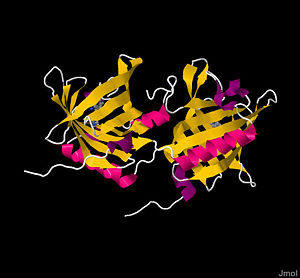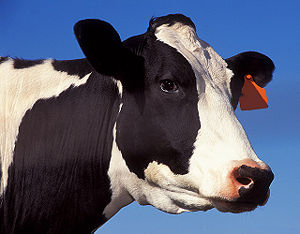User:Michael Kerins/Bovine Odorant Binding Protein
From Proteopedia
| Line 8: | Line 8: | ||
=='''Background'''== | =='''Background'''== | ||
| - | To understand the importance of bOBP, an introduction to smell-inducing agents, called odorants, is necessary. Essentially, odorants and odorant recognition is a chemosensory mechanism. The definition of an odorant is vague: any small, volatile compound that can reach the nose and elicit a sensory response is technically an odorant1. Despite the ambiguous formal definition, odorants share similar molecular weights, usually falling in the range of 200-400 g/mol2. They also tend to be organic and uncharged; charged compounds are generally odorless, and polar compounds are weaker odorants, meaning more hydrophobic molecules are better odorants1. Interestingly, these trends reverse in water-bound organisms; fish sense water soluble compounds instead1. Because the different environments require different environments for efficient chemical movement, this is not unexpected. Air-based odorants utilize a variety of chemistries, including terpenoids, esters, aldehydes, aromatics, musks, and jasmines3, as well as pyrazines, menthols, thymols, and aliphatic alcohols1. Although many classes of organic compounds elicit sensory responses, their relative strengths differ; odorant strength has been classically measured as the lowest perceivable concentration sensed by a statistically significant sample of the human population1. | + | To understand the importance of bOBP<ref name="One">, an introduction to smell-inducing agents, called odorants, is necessary. Essentially, odorants and odorant recognition is a chemosensory mechanism. The definition of an odorant is vague: any small, volatile compound that can reach the nose and elicit a sensory response is technically an odorant1. Despite the ambiguous formal definition, odorants share similar molecular weights, usually falling in the range of 200-400 g/mol2. They also tend to be organic and uncharged; charged compounds are generally odorless, and polar compounds are weaker odorants, meaning more hydrophobic molecules are better odorants1. Interestingly, these trends reverse in water-bound organisms; fish sense water soluble compounds instead1. Because the different environments require different environments for efficient chemical movement, this is not unexpected. Air-based odorants utilize a variety of chemistries, including terpenoids, esters, aldehydes, aromatics, musks, and jasmines3, as well as pyrazines, menthols, thymols, and aliphatic alcohols1. Although many classes of organic compounds elicit sensory responses, their relative strengths differ; odorant strength has been classically measured as the lowest perceivable concentration sensed by a statistically significant sample of the human population1. |
Odorants are recognized by odorant receptors linked to a G-protein, Golf. As is common with G-protein coupled receptors, an activated receptor causes the α-subunit of the Golf to displace GDP for GTP. With GTP bound, the α-subunit is activated and stimulates an adenylyl cyclase to form cAMP from ATP. Subsequent IP3 release triggers Ca2+ liberation, inducing membrane depolarization, action potentials, and direct neuronal stimuli to the brain1,3. Odorant receptors are incredibly specific for their respective odorants, with hundreds of receptor genes encoded by humans alone1. | Odorants are recognized by odorant receptors linked to a G-protein, Golf. As is common with G-protein coupled receptors, an activated receptor causes the α-subunit of the Golf to displace GDP for GTP. With GTP bound, the α-subunit is activated and stimulates an adenylyl cyclase to form cAMP from ATP. Subsequent IP3 release triggers Ca2+ liberation, inducing membrane depolarization, action potentials, and direct neuronal stimuli to the brain1,3. Odorant receptors are incredibly specific for their respective odorants, with hundreds of receptor genes encoded by humans alone1. | ||
Revision as of 05:11, 29 April 2011
Bovine Odorant Binding Protein
Imagine a world without smells: no fresh cookies, no Valentine’s Day roses, and no stinky gym socks. The sense of smell clearly plays a unique role in how humans and other organisms experience their environment. Unlike the physical objects we see and touch, scents travel invisibly through the air, enter our nose, and elicit a sensory perception. The transduction for this sensory mechanism is crucial in eliciting neuronal activity to stimulate the brain. Before transduction is starts, however, select smell molecules, called odorants, must cross a water mucosa layer to reach an extracellular receptor. In bovines, this feat is performed by Bovine Odorant Binding Protein (bOBP), a small homodimeric protein composed of two β-barrels that utilize a hydrophobic ‘trap’ to transport and release odorants at cellular receptors.[1]
Background
To understand the importance of bOBP[1]


